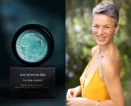From the shelves of our favorite shops to the guest rooms of some of the coolest homes in LA, we see these little teepee-shaped incense burners everywhere we go. We were thrilled then to see this behind-the-scene glimpse at the third-generation kiln in New Mexico where they are made. Kelcie Spurgin, who’s grandmother first began the simple Incienso De Santa Fe phenomenon, told us a little about this enchanting family business with roots right in the land their woody incenses celebrate so well. If you have any fond memories of the wild, wild west – or yearnings to head there – get your hands on Incienso’s sustainably-made wood incense. Pinon, juniper, mesquite, cedar, alder, fir balsam, or hickory will give you that ‘campfire in the wilderness’ feel in the comfort of your own oh-so-urban home. Here’s Kelcie with more on Incienso’s story…
The Chalkboard Mag: Kelcie, tell us about Incienso for those who aren’t familiar:
Kelcie Spurgin: Incienso de Santa Fe is a small family-owned and operated manufacturer of natural and sustainable wood incense bricks and handcrafted incense burners.
TCM: Finish this sentence: In the beginning…
KC: In the early 1960s my grandmother, Candace Burlison, began Incienso in the small northern New Mexico town of Cimarron. Incienso still holds a special connection to Cimarron, which is most famous for neighboring the Philmont Scout Ranch. My grandmother originally fused together the company that produced plaques and other treasures for the Scouts and a budding incense idea, together to create the first products that would eventually become classics. To this day, we enjoy creating those very same mementos for the Scout Ranch!
TCM: Which came first, the incense or the incense-burners?
KC: From that genesis, my grandmother grew the business, adding the original handcrafted burners. As artists would pass through town looking for work she would hire them to sculpt a new burner or to draw up art for a new box, having no idea their work would survive in exact replicas more than 50 years later. Even my grandfather helped in this entrepreneurial venture. Entranced by the upper Northwest coast, he created the Ceremonial House burner, which we still sell to this day. Twenty years later, my mother, Kelly MacRunnels, and father, Alan MacRunnels, helped move Incienso de Santa Fe to Albuquerque, New Mexico, where they took over operations and nourished the company as it continued to grow. They added new incense scents, expanding the line to the current seven fragrances: Pinon, Cedar, Juniper, Hickory, Mesquite, Fir Balsam and Alder. They also added several new products including a line of four larger New-Mexico-inspired burners.
TCM: How do you source the incense materials?
KC: To make the incense, we first start out with wood that is gathered after the tree is already “down and dead.” Meaning, we do not cut wood, but only use what nature has provided in the form of wood from trees that have naturally expired. Our other materials come mostly from other manufacturers in the United States. Just as we appreciate the support from others who support local manufacturing, we try to do the same.
TCM: What do you love about incense:
KC: What do I love about our incense? Honestly what is not to love! One of our favorite parts is hearing from customers who have become friends after 30 years or more. I can’t tell you how often we hear, “I remember having this as a kid… I am so glad I found you again!” Incense can be used as an aid in meditation or even used in spiritual rituals of cleansing or purification.
TCM: Your favorite incense:
KC: While Pinon is our most popular scent, my mom and I are partial to the Fir Balsam, and my dad loves the Alder.
TCM: Tips on using incense properly:
KC: Our bricks are larger than most incense cones, making them harder to light. The up side is that they burn longer and produce more incense. Hold the brick over a flame until the brick burns by itself. This will cause the cone to expand at the burning end. After the brick has stopped flaming, gently blow on the burning ember. Place the brick in the center of the censer (or incense burner), unlit end down. If the cone should fall over or is laid on its side, the flame may go out.
TCM: Any notes on the process of making your products?
KC: Each of our burners is hand-cast and then painted in almost the exact way they were originally. Again, the process from wood to incense has changed little and we even have some of the original equipment. However, as we are the only manufacturer of this type of brick incense, so our process is a guarded family secret!











